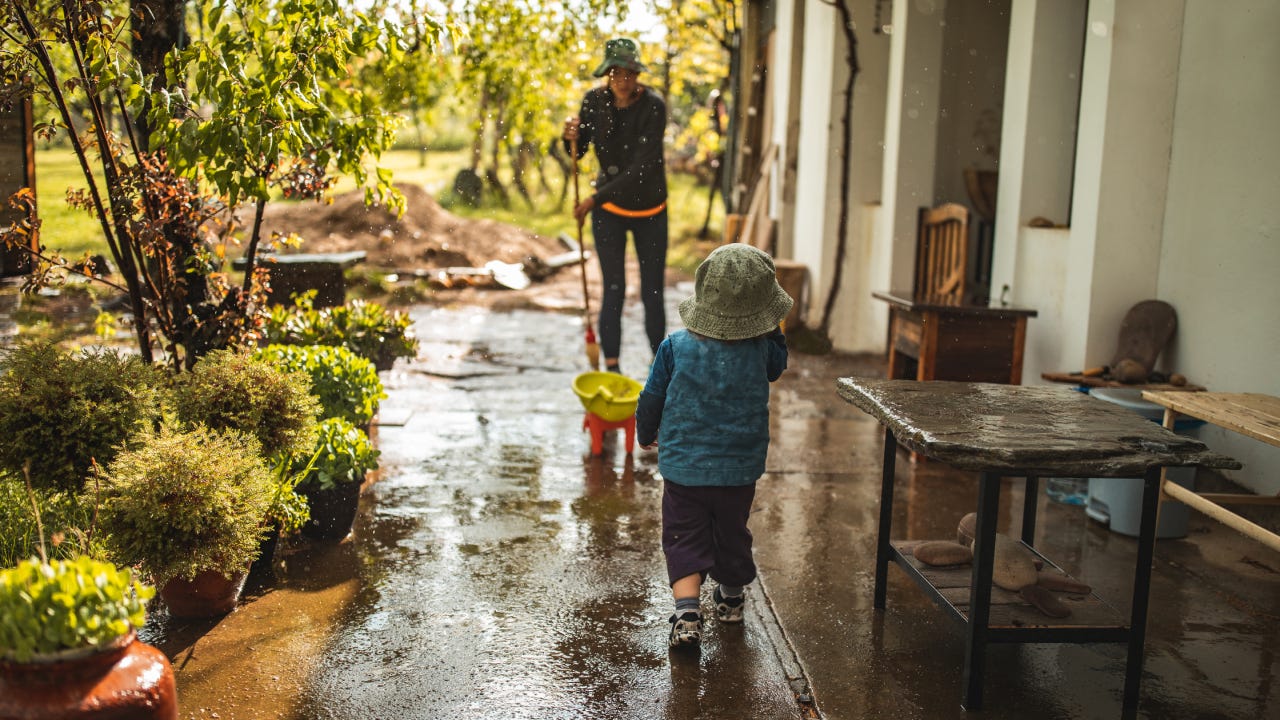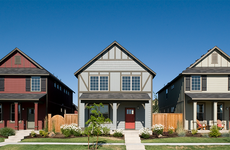8 Common home insurance myths

The Bankrate promise
At Bankrate, we strive to help you make smarter financial decisions. To help readers understand how insurance affects their finances, we have licensed insurance professionals on staff who have spent a combined 47 years in the auto, home and life insurance industries. While we adhere to strict , this post may contain references to products from our partners. Here's an explanation of . Our content is backed by Coverage.com, LLC, a licensed entity (NPN: 19966249). For more information, please see our .
Have you ever heard that you don’t need flood insurance unless you live in a high-risk area? Or that you can’t get homeowners insurance if you have a pool? There are a lot of misconceptions floating around about what homeowners insurance is and how it works. These home insurance myths, often born from a blend of outdated notions and hearsay, could significantly impact your decision-making as a policyholder. Recognizing the difference between myth and fact is not just about being well-informed; it’s about ensuring your home and assets are financially protected.
1. All natural disasters are covered
One common home insurance misconception is the belief that policies universally cover all natural disasters. Standard home insurance policies may cover certain types of natural disasters, like storms or wildfires, but there are some common exclusions. For instance, flooding and earthquakes are commonly not covered under standard policies.
To address these gaps, homeowners could consider endorsements or separate policies that specifically cover these exclusions. Flood insurance is offered by some private insurers and the National Flood Insurance Program. Earthquake insurance is available as an endorsement from many private carriers.
Depending on where you live, your policy may exclude coverage for other natural disasters. For example, some home insurance carriers in California are now excluding wildfire coverage from standard policies. The best way to know what is and isn’t covered by your policy is to read through your declarations page or speak with your insurance agent.
2. Personal property insurance covers all my personal belongings
A frequently encountered home insurance myth is the assumption that personal property insurance automatically covers all personal belongings to their full value. In reality, most home insurance policies have limits on personal property coverage, which may not fully account for the value of all your possessions, especially high-value items.
Your personal property coverage is determined by your coverage limits and whether you choose actual cash value (ACV) or replacement cost value (RCV) coverage. Standard home policies include personal property coverage at 50-70 percent of your dwelling insurance. If you think you need more, you can discuss this with your agent. If you choose ACV, damaged belongings are replaced with depreciation factored in, while RCV covers the cost to replace the belongings with a new version at today’s prices.
Standard policies also generally have coverage limits for individual items. For items of higher value, such as jewelry, art or collectibles, homeowners can consider scheduled personal property coverage. This endorsement offers more robust coverage for specifically listed valuables.
3. You only need flood insurance in high-risk areas
According to FEMA, nearly 25 percent of all flood insurance claims are filed by homeowners outside of mapped high-risk areas. Extreme weather can be unpredictable and expensive, which is why many insurance experts recommend considering flood insurance even if it’s not mandated by your lender.
To assess your flood insurance needs, you can speak with your insurance agent or review FEMA’s flood map to get an idea of your home’s risk level.
4. Old homes are cheap to insure
Contrary to a common home insurance myth, insuring older homes is not always cheaper than insuring newer ones. This misconception might stem from the idea that older homes, often valued less than modern ones with newer features and appliances, would naturally attract cheap insurance premiums.
However, various characteristics of older homes can lead to higher insurance costs. For instance, older roofing materials, electrical systems and plumbing are more prone to damage and can be costly to replace or repair, increasing the risk factor for insurers.
Moreover, the materials and methods used in older homes may now be outdated or no longer compliant with current building codes, leading to costly repairs or additional work to bring them up to code.
Ultimately, the cost to insure an old home will depend on your characteristics as a homeowner and the home’s details. Comparing personalized quotes is the best way to get an accurate idea of what you might pay for coverage on an older home.
5. Homeowners insurance covers termite infestations
Termites can be destructive and expensive, but unfortunately, standard home insurance policies do not cover pest damage. Pest infestations, including termites, birds and rodents, are often seen as maintenance issues, requiring regular upkeep and preventative measures rather than sudden, unforeseeable events that home insurance is designed to cover. To avoid pest damage, insurance experts recommend proactively engaging in pest control.
Some exceptions where animal damage may be covered include sudden events, like a bird breaking your window or a deer running through your fence.
6. Landlord insurance will cover my belongings as a renter
Another common home insurance myth is that landlord insurance covers the personal belongings of renters. Landlord insurance policies typically cover only the building itself and the landlord’s property, not the personal belongings of tenants. This type of insurance is designed to protect the landlord’s investment from damage due to events like fires, storms or other covered perils, and it may also include liability coverage in case someone is injured on the property.
For renters, the appropriate form of financial protection for their personal property is renters insurance. Renters insurance policies are specifically designed to cover the belongings of tenants and provide liability coverage.
Additionally, renters insurance often offers coverage for additional living expenses in case the rental property becomes uninhabitable due to covered damage. Renters insurance is not required by law, but it may be required by your landlord, and it’s usually very cheap compared to the cost of replacing your belongings out of pocket.
7. I don’t need homeowners insurance if I have plenty of savings
The average cost to rebuild a home in 2022 was $284,764. Even if you have ample savings, this is a significant cost and much higher than the average cost of a home insurance policy, which is $1,687 per year for $250K in dwelling coverage. Home insurance also covers other potential costs, like liability coverage in case someone is injured on your property and additional living expenses coverage if your home is uninhabitable due to a covered peril.
Wealthy individuals often choose to maintain homeowners insurance coverage not just as a financial safety net, but also for the peace of mind and convenience it offers. Insurance can streamline the recovery process after a loss, providing quick access to funds and professional assistance.
One way wealthy individuals may be able to save on their home insurance is by choosing higher deductibles. If you have ample personal savings, choosing a higher deductible will lower your premium without sacrificing coverage.
8. I can’t get homeowners insurance with a pool or trampoline
Pools, trampolines, treehouses and other attractive nuisances can increase your liability risk, potentially limiting your home insurance options and increasing your premium. While insurers may see your home as higher risk with these features, they don’t automatically disqualify you from coverage.
Installing safety features such as locked gates, automatic lights and alarms on attractive nuisances may reduce your risk and potentially reduce rate increases. Discussing your pool or trampoline with your insurance agent during the quoting process will help you understand how different insurers rate these features.
The bottom line
Homeowners insurance is complex, and misconceptions arise easily. Fortunately, doing your own research can help separate truth from fiction. If you’re unsure about any of your home insurance specifics, speaking with your insurance agent or reaching out to your state’s department of insurance can provide further clarification.
Related Articles



